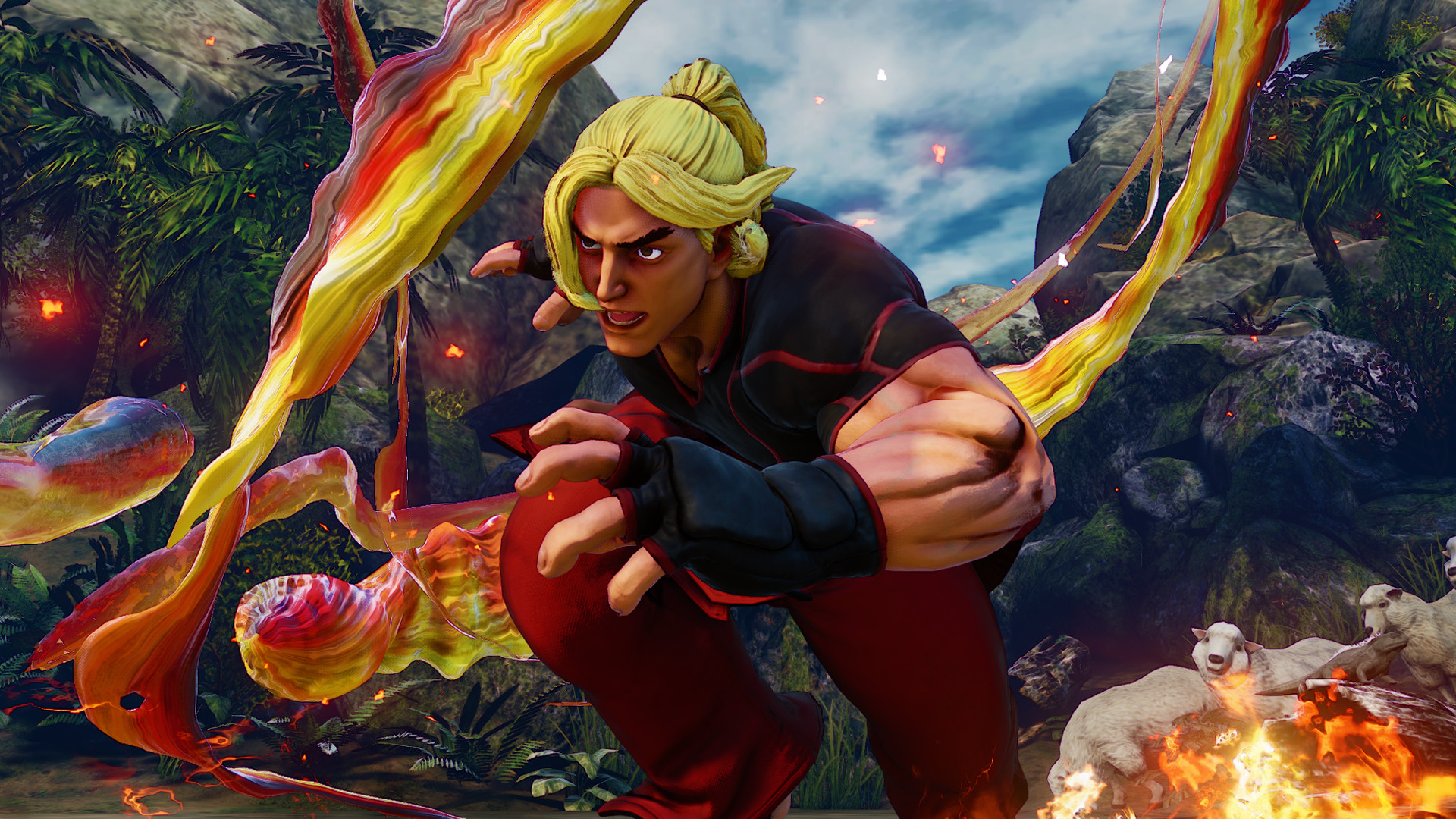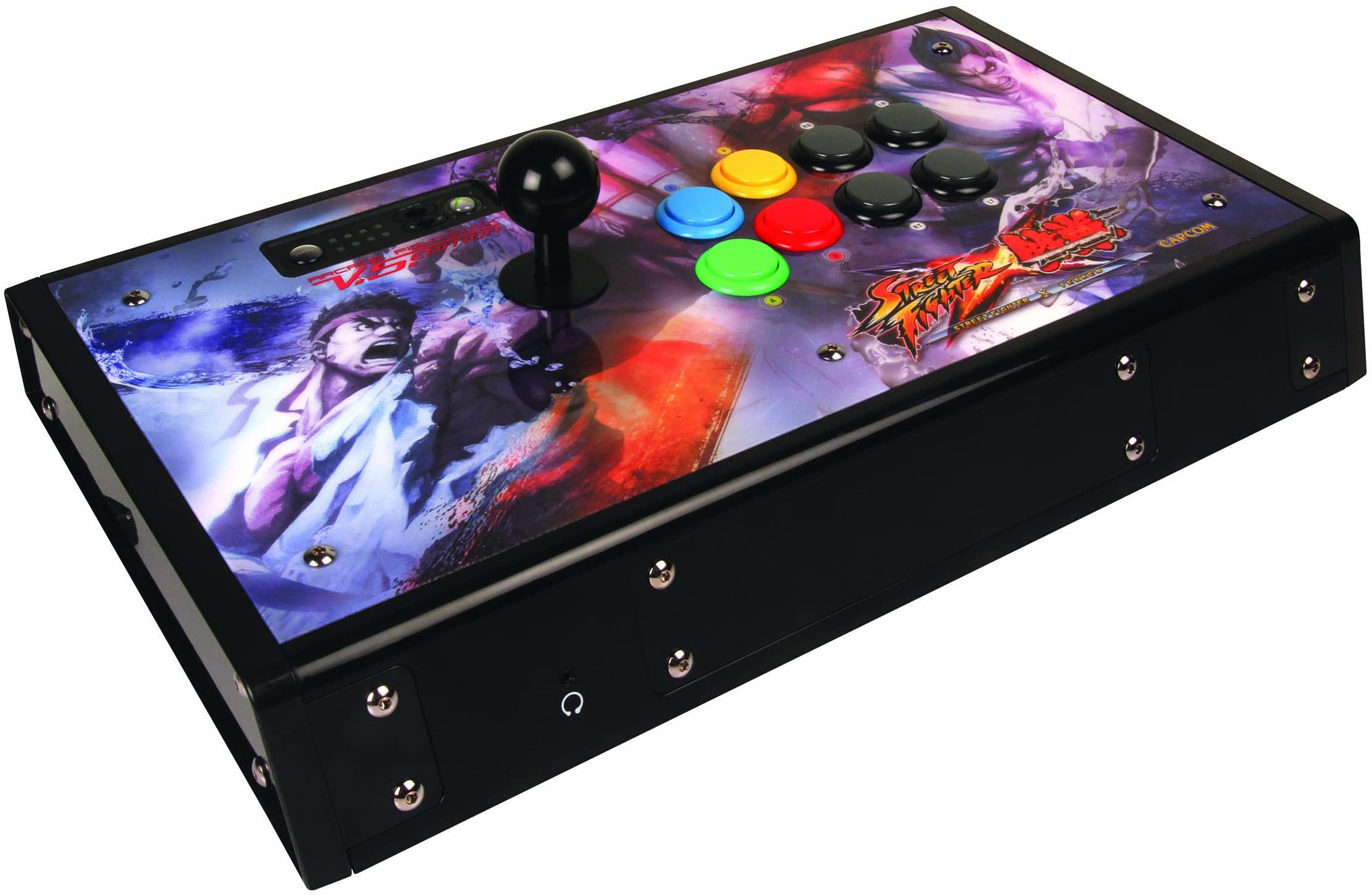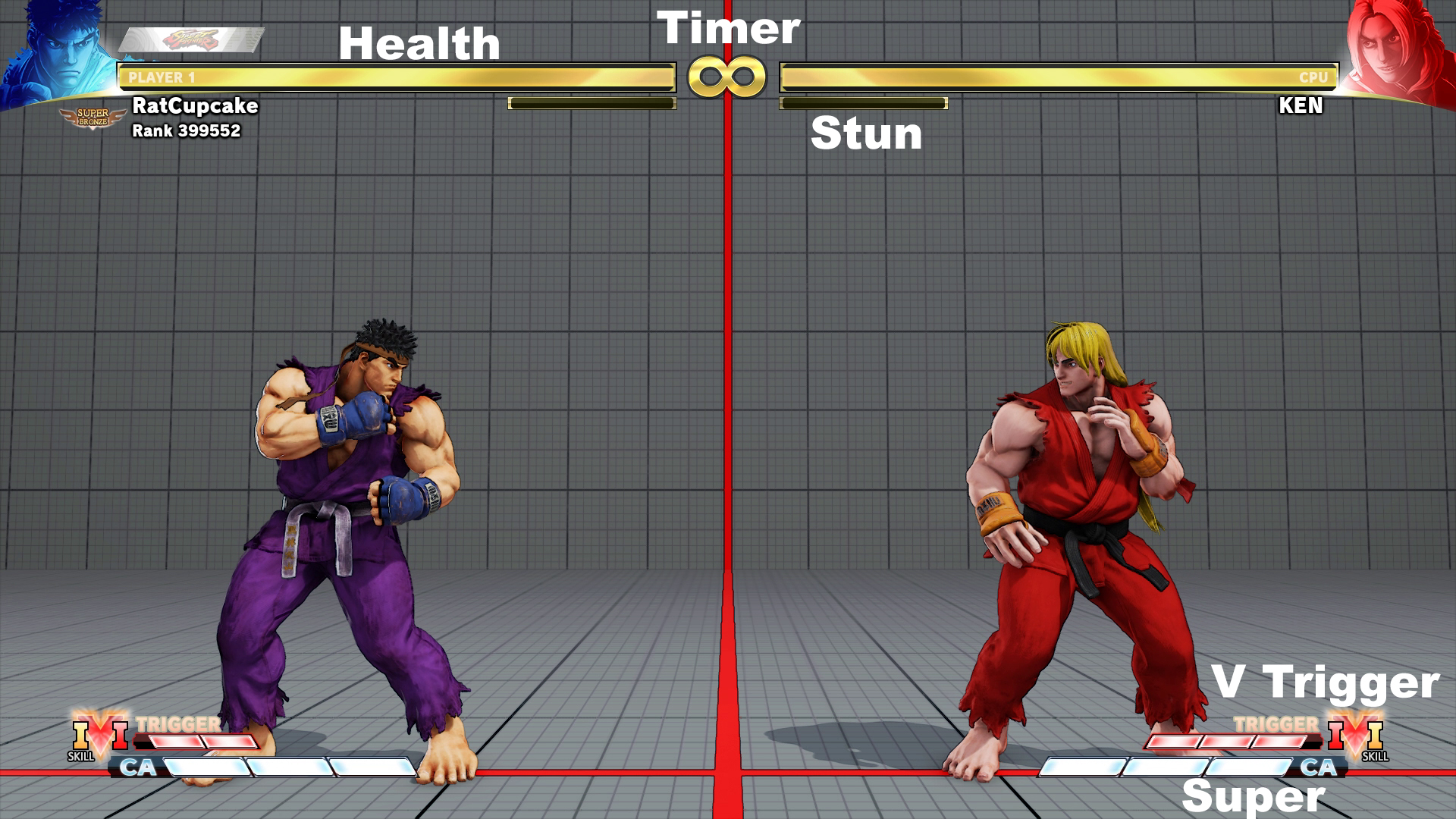How to get started in Street Fighter V
Dust yourself off and rise to the challenge.

Street Fighter V is great fun to get into, but taking your skills online can be daunting. If you're interested in the genre, chances are you've probably button-mashed your way through a few rounds with Ryu, but there's a difference between thoughtless special moves and learning proper combos. The problem is the goddamn steep learning curve between them.
There's no sugar coating it: Learning how to play any fighting game is a serious time sink. If that doesn't scare you off, however, you've come to the right place to try this deep and complex genre. So, whether you're in the mood for some local trash talking with mates on your sofa, or want to eventually brave online play, here's how to get started in SFV.
Equipment
Don't fall into the trap of thinking that you have to buy a shiny new fight stick just because the pros use them. If EVO can be won with a PS1 controller, you don't need state-of-the-art kit. You'll give yourself the best chance by finding a controller that's comfortable for you.
If you're unsure what's on offer, here are your options:
Keyboard
As a PC gamer, you already have a perfectly good piece of equipment sitting on your desk. Playing on a keyboard may be a good place to start, assuming you're already familiar with navigating the keys. Executing precise movements is arguably easier when you have a specific key to press for directional inputs, rather than a stick.
Controller
The biggest gaming news, reviews and hardware deals
Keep up to date with the most important stories and the best deals, as picked by the PC Gamer team.
Chances are you have one of these lying around. The DualShock 4 and Xbox One controllers are widely used, and they're easy to configure on Steam.
For something that's made with fighting games in mind, check out six-button pads. Having all six buttons on the face means you don't have to use the shoulder buttons for heavy attacks. Sadly, most companies don't make them anymore, so picking them up secondhand from sites like eBay is the way to go. If you can track them down, the Hori Fighting Commander Pro and Sega Saturn (USB) are worth considering.

Arcade stick
Now we're getting a little more hardcore. Arcade/fight sticks are a popular choice in tournaments, and they range from affordable models to high-end custom builds that cost hundreds of dollars.
These more specialised controllers are fitted with a stick for directional inputs and attack buttons on a flat box that you can perch on your lap or table. They're effectively the front of an arcade cabinet, just in portable form.
Hitbox
We're deep inside the rabbit hole now. Hitboxes are essentially an arcade stick minus the stick, which is replaced by four buttons.
The rise of the Hitbox has also welcomed other controller options, including Mixboxes and a controversial option: the Cross|Up. For all intents and purposes, the MixBox is a keyboard-arcade stick hybrid, switching out the stick for WASD. However, the Cross|Up retains the stick and face buttons, with four additional buttons available for movement. This makes trickier moves easier to perform, which some dismiss as cheating. While I understand this argument, the Cross|Up still requires you to have accurate execution when using those extra buttons.
Choosing a character
If a character has already caught your eye, know that their attributes are more important than their appearance. SFV has a variety of archetypes and picking a character that supports your playstyle is ideally where you want to start.
Watching tournaments, streamers, and YouTubers helps you to get a good idea of what each character is capable of, but there's no substitute for testing them out yourself. SFV's training mode is a great place for new players to get started, so experiment with characters and their movesets there. In addition, its trials mode challenges you to ace combos in order to progress, which is also a handy introductory tool.

HUD
Keep an eye on your HUD over the course of each round to see how much health you and your opponent have left, how your meters are building, and how much time is left. Thankfully, SFV's HUD displays essential information clearly, so a quick glance mid-game tells you everything you need to know.
Health
Your most precious resource. If yours drops to zero, you lose the round. Your health bar will commonly be clearly displayed on the screen, with two different ways to deplete it. If your opponent lands an attack on you, it removes that portion of health permanently. However, some moves deal 'grey life' which can be recovered as long as you're not hit again before it regenerates.
Timer
This elapses over the course of a round and resets when you begin a new one. If both players are still alive when the timer reaches zero, the player with the most health wins the round.
Meter management
Your Super bar shows how close you are to unleashing a powerful special move. This builds over the course of multiple rounds and can only be used once, so make it count.
Under your health meter is your stun bar, which will tap out if you're hit too many times in quick succession. This essentially freezes you for a few seconds, giving your opponent the chance to land a free combo.
SFV also has a mechanic called V-Trigger which has different effects across its roster. This ranges from a buff that enhances your damage for a short period of time, to unique moves.
Controls
Getting to grips with the controls in a fighting game takes some time and can feel overwhelming at first. Performing special moves and landing combos consistently requires practice, too. While practicing is boring, it's essential to help you push through early barriers and commit movements to muscle memory. So, let's start off slow.
There are two main sets of controls to learn: movement (directional inputs) and attacks.
Movement
Directional inputs control your character's movement, whether they're walking, dashing blocking, or jumping. If you're using a controller, movement is controlled on the D-pad or analogue stick.
When inputting special moves, direction matters, too. For example, sending out a Hadouken (Fireball) requires the input: Down, Down-Forward, Forward + punch in a smooth quarter-circle motion. Depending on which side of the screen you're standing, forward will be either left or right.
Holding Back allows you to block moves. You can also crouch block by holding Down and Back at the same time to block low attacks. To jump, tap Up, and to move faster double-tap either Forward to dash towards your opponent, or Back to retreat.
Attacks
Dealing damage while avoiding it yourself is kind of the point of a fighting game, but countering your opponent's moves with a split-second reaction is the tricky part.
Fighting games are basically rock, paper, scissors, but with punches and kicks. You have a move that beats your opponent's move, and they have another that beats yours, and so on. SFV has six basic attack moves spanning Light, Medium, and Heavy moves. You may have also heard people refer to these as Jab, Strong, and Fierce. Light moves are weaker and faster, whereas heavy attacks are slower while dealing more damage.
Key terms and concepts
Zoning
Zoning means keeping your opponent a certain distance away from you. By maintaining this distance you can limit their options. Not only does this give you more control over how the match pans out, it puts them under pressure to act. Then, when they're baited into a rash attack, you can punish them.
Some characters (Guile) are better at zoning than others, but learning your character's moves and their ranges will help you do it effectively. Be wary of retreating too far, though: This is an easy way to get trapped and pummeled.
Blocking and punishing
Knowing when to block is an essential skill. Start learning it as soon as possible. Once you can block incoming attacks consistently, now get to grips with 'punishing' your opponent. A punish is a counter move or combo used directly after your opponent tries, and fails, to attack you.
Don't expect to memorise every move from a large fighting game roster straight away, but recognising some moves and having a few punishes up your sleeve is a good start. With time you will start to recognise patterns in your opponents' playstyles against which you can counter. It may not come naturally at first, but researching your character's best punishes and practicing often pays off.
Throws
Throws are another thing that can bamboozle new players. They counter blocking and deal around a 1/10th of an average character's health. They also knock down your opponent, which can leave them open to further attacks as they rise. If you hold back in SFV, you can even throw your opponent in a different direction, which helps to push your opponent into the corner of the screen. Cammy and Guile can also throw while airborne.
In SFV, pressing the throw buttons at the same time as your opponent stops them from grabbing you. This is called a throw escape. It's normal to struggle with these timings to begin with, but anticipating a throw is somewhat easier. Most characters have to be relatively close to successfully throw you, so keeping your distance negates that.
Command throws tend to deal substantially higher damage than standard ones, but they require a different input and usually have a long start-up. Zangief has a command throw in the air, which also serves as an anti-air.
Jumping
Many make the mistake of being too aggressive and throwing out random attacks with lots of jumps in between. While overwhelming your opponent with this style works at lower level play, you'll need to break that habit to match more accomplished foes. Jumping leaves you vulnerable most of the time, so try not to use it as a crutch.
Anti-airs
These moves are why you should avoid jumping excessively: Anti-airs counter a jumping attack. They usually deal strong damage and some characters can even follow them with a punishing combo. It's worth perfecting at least one anti-air move early on to teach jump-happy players a lesson.
Cross-ups
A cross-up is an attack that hits your opponent from behind before they can block, but they're challenging to pull off. You need to get the perfect spacing between yourself and your opponent so that when you jump, you land just on the other side of them.
Invincibility frames
While you don't need to get bogged down in frame data early on, it's worth knowing what it is, as it affects your accuracy.
Invincibility frames prevent you taking damage while you perform particular moves. They often vary depending on the heaviness of the attack. For example, Ryu's Shoryuken has invincibility frames as its animation begins, but the length of the invincibility varies depending on whether it's a Light, Medium or Heavy version of the move.
Attack types
Normal attacks
These are your standard Light, Medium and Heavy moves. They vary depending on whether you're standing, walking, crouching or jumping. Experiment with your character in training to understand which attacks they have, and how their ranges vary.
Special attacks
These require multiple button inputs to achieve. For example, to do a Shoryuken (Dragon Punch), hit Forward, Down, Down-Forward + punch.
Such inputs may be shared with other characters to pull off similar moves: The inputs required to throw a projectile with one character may be transferable, for example. However, this won't be the case for all characters and moves.
Super
Your super move is essentially an ultimate. You charge your super meter over the course of a round to eventually unleash a powerful move. Then the meter resets, regardless of whether it actually hits your opponent.
The best way to ensure that it does land is by using it in a combo. By attacking beforehand, you can guarantee your super will land. A good example, with Ryu, would be the crouching medium kick into Hadouken combo. If you notice that your fireball hits, you promptly input Super to finish off the combo. Timing is still important here, though, as it's possible to drop the combo if you mistime the inputs.
Top tips
The main thing to remember when learning something new is that it won't just happen overnight. Fighting games have a high skill ceiling, but here are some things you can do to help hone your skills:
Practice often, and on the right things
This seems obvious, but it's really important. Watching your replays helps you to pick out mistakes and highlights the areas you need to work on, for instance.
When learning a new combo, make sure you've really mastered it; Don't practice it until you get it right, but until you can't get it wrong. Properly learning a move means you can perform it on either side of the screen, at any time.
You should also play matches regularly against real opponents. It's one thing mastering this in training, but performing under pressure in a match is quite another. Trust me, it's easy to freeze up and forget your combos in the heat of the moment, despite having spent hours drilling them into your muscle memory.
Use your fighting game controller to play other games
If you're playing on a keyboard then you've already got a head start, but give this tip a go if you're trying a new arcade stick or Hitbox. When starting out, I found that playing Spelunky with my arcade stick helped me to familiarise myself with the controls quicker.
Play against better players
There's always going to be someone better out there, so use that to your advantage. After serving your time as a punching bag early on, you'll be surprised by how much you've improved.
Playing against a more experienced friend or jumping into online casual games is a good way to learn matchups. To make these sessions more valuable, set aside time to practice in training mode in preparation for testing your skills in these fights. Treat these matches like exams, having spent hours of revising in training, beforehand.
Watch high-level players
After choosing your character and learning the basics, it's fun and helpful to watch how high-level players operate. Now that you understand how fighting games work, it's easier to pick out what other players are doing, and use that to help you improve further.
Getting into the esports scene and watching the best players go head-to-head is really fun, too. Recognising how tricky it is to pull off a crazy sequence of combos and witnessing someone pull them off live is awesome. Moments like these bring the community together, and make you better.
As PC Gamer's guides writer, Emma is usually juggling several games at once. She loves competitive first-person shooters like CS:GO and Call of Duty, but she always has time for a few rounds of Hearthstone. She's happiest when she's rescuing pugs in Spelunky 2.


